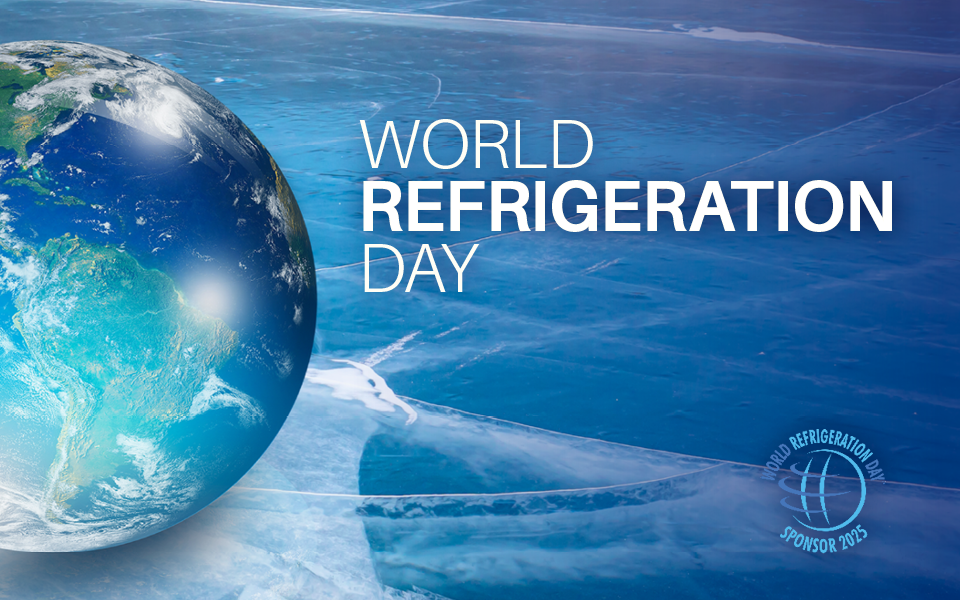*On June 1, 2023 Emerson’s Climate Technologies business became a new standalone company – Copeland. Though our name has changed, we are building on more than a century of HVACR innovation and industry leadership, and Copeland continues to offer the same products, industry stewardship, and learning opportunities you’ve grown to trust. Information found on this webpage posted before June 1, 2023 may contain our old name or branding, but you can be at ease knowing it was created with the knowledge and expertise of Copeland.

-
- Low critical point (subcritical vs. transcritical) —R-744 has a relatively low critical point (1,055 psig or 87.8 °F) that determines its modes of operation. Subcritical mode refers to systems operating in regions with colder climates and lower ambient temperatures where the refrigeration cycle takes place below 87.8 °F. Transcritical mode takes place above this point (also referred to as supercritical) such as in warmer regions or periods during the summer heat.
- Higher operating pressure —one of the common reservations when using CO2 is its relatively high operating pressure. But, it’s important to realize that high pressure only takes place in the beginning stages of the refrigeration cycle while the rest of the refrigeration cycle operates at pressures like that of a traditional R-410A high-side system. Stainless steel piping is typically used to handle these pressures, although high-pressure ferrous alloy copper piping has recently been introduced.
- High triple point (possibility of dry ice formation) —triple point is the point at which the three phases of CO2 coexist (60.4 psig or -69.8 °F). While the temperature seems low, the pressure is relatively high by refrigerant standards. As the pressure approaches that point in CO2 systems, the refrigerant will turn to dry ice (an unusable state that’s neither a vapor nor a liquid). This can occur during maintenance when a contractor mistakenly thinks the lines are clear, taps the system and discovers the formation of dry ice.
- System charging —the high triple point affects R-744’s charging procedures. After pulling a vacuum, the internal pressures of the system will be well below 60.4 psig. Since standard atmospheric pressure is 14.696 psig, the process cannot start with liquid charging. Instead, contractors must vapor-charge the system (roughly to around 145 psig), and then wait until the system has equalized with 145 psig of vapor before charging with liquid.
- Managing scheduled shutdowns and power outages — when a CO2system shuts down for longer periods of time, pressures will build more quickly than in an HFC system. To preserve the system charge, the most reliable method is to install a generator with a standby condensing unit. When the power goes out, the generator powers a condensing unit that has a loop within the flash tank (i.e., receiver) designed to cool the volume of liquid within the tank and keep pressures down.
- Resumption of power —the electronic expansion valve (EEV) on every CO2 case utilizes a stepper motor or a pulse-width modulated type of valve. When the power goes out, the stepper motor is frozen in that exact position, leaving the system’s CO2 evaporators susceptible to flooding. R-744 naturally migrates quickly to these cold evaporators, and when the system resumes, this can cause considerable damage to compressors. To avoid this, liquid line solenoids placed upstream of the EEV, supercapacitors or battery backups are often used on case controls to force the valves closed during a power outage.
Form a refrigerant plan — managing CO2 is different from what contractors may be accustomed to with traditional HFCs. Operators and contractors alike need to understand the local codes for storing R-744 cylinders (inside or outside the building), and develop an appropriate strategy.

Celebrating World Refrigeration Day 2025
Electrical component considerations for A2L system safety Heating, ventilation, air conditioning...
A2L Refrigeration Overview — Systems, Safety and Servicing Considerations
*On June 1, 2023 Emerson’s Climate Technologies business became a new standalone company –...
Servicing the Next Generation of Lower-GWP Refrigerants
*On June 1, 2023 Emerson’s Climate Technologies business became a new standalone company –...
